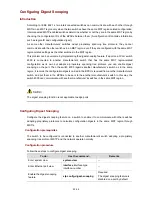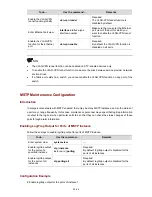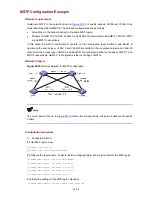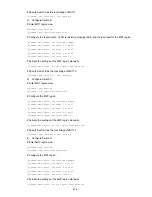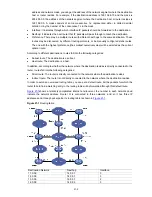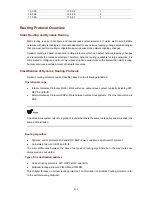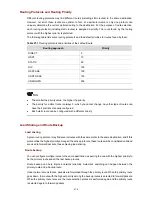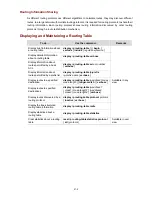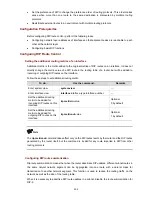
21
IP Routing Protocol Overview
Go to these sections for information you are interested in:
z
Introduction to IP Route and Routing Table
z
Routing Protocol Overview
Displaying and Maintaining a Routing Table
z
The term
router
in this chapter refers to a router in a generic sense or an Ethernet switch running a
uting protocol.
ro
Introduction to IP Route and Routing Table
IP Ro
(through a network) according to the destination address of the packet and forwards
the packet to the next router. The last router on the route is responsible for delivering the packet to the
ost.
Routing Table
Function
e packets destined for the host/subnet. And the router
e destination host if the host is
ries by origin:
e routes.
s: Routes that are manually configured.
outes: Routes that are discovered dynamically by routing protocols.
Routing entry
z
z
ute
Routers are used for route selection on the Internet. As a router receives a packet, it selects an
appropriate route
destination h
The key for a router to forward packets is the routing table. Each router maintains a routing table. Each
entry in this table contains an IP address that represents a host/subnet and specifies which physical
port on the router should be used to forward th
forwards those packets through this port to the next router or directly to th
on a network directly connected to the router.
Routes in a routing table can be divided into three catego
z
Direct routes: Routes discovered by data link protocols, also known as interfac
z
Static route
z
Dynamic r
Each routing entry in a routing table contains:
Destination: It identifies the address of the destination host or network of an IP packet.
Mask: Along with the destination address, it identifies the address of the network segment where
the destination host or router resides. By performing a logical AND operation between destination
21-1




